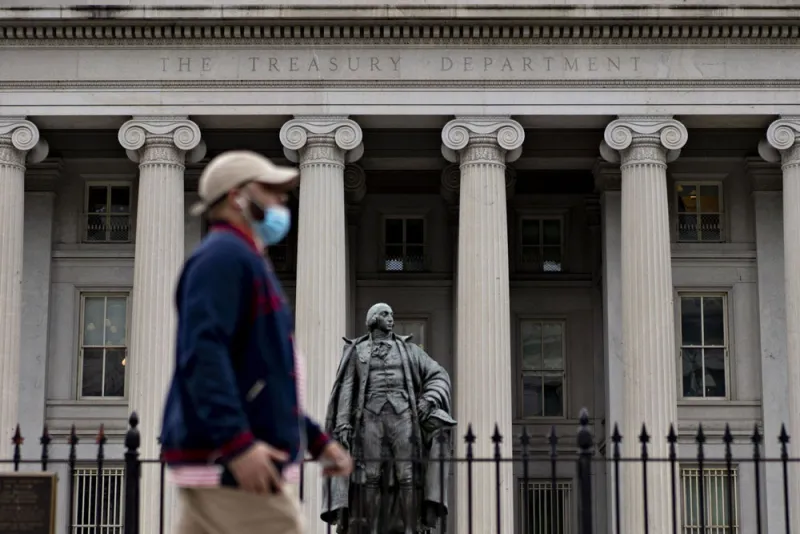Hedge funds aren’t to blame for the disruption in the U.S. Treasury market as the pandemic was wreaking havoc in March, according to research from Harvard University.
The findings are “in contrast to some recent policy papers arguing that hedge funds were a major amplifier of those disruptions,” Marco Di Maggio, a finance professor at Harvard’s business school and a faculty research fellow at the National Bureau of Economic Research, wrote in his recent paper. He said that “selling pressure from the foreign sector might have been a more significant cause behind illiquidity.”
While the turmoil in March exposed “important vulnerabilities” in the Treasury market, Di Maggio found the positions held by hedge funds using relative-value strategies in fixed income were “far too small” to be the main disruptors. He said that selling by the hedge funds was probably concentrated in the “cheapest-to-deliver Treasuries,” an area of the market that was less dislocated during the coronavirus crisis.
Liquidity had become strained in the Treasury market until toward the end of March, when the Federal Reserve intervened by ramping up its buying of securities, according to the paper. Di Maggio said that some researchers have suggested that, as investors were unwinding Treasuries positions, hedge funds amplified the market dislocation as margin requirements increased on their futures positions.
As their thinking went, this prompted selling, resulting in a margin spiral that coincided with primary dealers being unable to absorb the assets on their balance sheets. Banks were constrained by balance sheet and capital ratio requirements that were put in place after the 2008 financial crisis.
“There is evidence that — despite the pullback in bank financing — hedge funds continued to provide liquidity to the Treasury markets,” Di Maggio said.
Hedge funds behaved as expected while facing difficult financing conditions when banks suddenly stopped funding their positions in the “repo market,” according to Di Maggio. In the market for repurchase agreements, known as repo, banks intermediate the cash flowing from money market, pension, and insurance funds to hedge funds. Money market, pension, and insurance funds are the lenders, and hedge funds are the borrowers.
“Since the last financial crisis, exploding federal deficits led to a significant increase in the stock of marketable Treasuries which outstripped the capacity of dealers to safely intermediate the market on their own balance sheets,” he said.
Relative-value hedge funds that focus on fixed income are more reliant on the repo market than any other hedge fund strategy, according to the paper.
“The Treasury futures-cash relative value strategy usually consists of a long leg, a Treasury position in the cheapest-to-deliver bond, financed through the repo market, and a short leg in the Treasury futures contract,” Di Maggio wrote in his paper. “In recent years, the Treasury futures contract price has usually been slightly higher than that of the underlying, because holding spot Treasury securities consumes more balance sheet capacity or balance sheet financing than holding a long position in a futures contract.”
“In normal times, investors can buy Treasuries, sell the futures contract, and pocket the difference,” he said. “The strategy is usually leveraged through the repo agreement enabled by posting the Treasury securities as collateral.”
[II Deep Dive: The Corporate Bond Market Is ‘Basically Broken,’ Bank of America Says]
In Treasury trading, hedge funds, even after including leverage, contributed just 4 percent to 9 percent of total volume in the spot market and 12 percent to 15 percent in the futures market, according to Di Maggio’s research. That made them the third largest traders of Treasury securities, after principal trading firms — which accounted for more than half of trading volume — and the banks and dealers, the paper shows.
There are other measures by which hedge funds are relatively small players in the market.
Relative-value strategies represent about $315 billion of hedge fund assets, and fixed-income relative-value managers are just a subset of that category, according to the paper. Plus, fixed-income relative-value hedge funds have an average leverage ratio of about 3, a level that Di Maggio suggests is not as high as many may think.
“There is ample evidence that the hedge funds active in the FI-RV strategy did not possess the capacity or resources to drive the Treasury sell-off,” he said.
Meanwhile, investors outside the U.S. were particularly big sellers of Treasuries, as they sought to “lock in U.S. dollars in cash,” according to the paper. Di Maggio’s research found the foreign sector had net outflows as large as $260.4 billion in Treasury securities during March, including $147 billion tied to official accounts.
That dwarfs the $90 billion reportedly sold by hedge funds with relative-value strategies targeting fixed-income, he said. Also, the price on Treasury securities owned by these hedge funds — the cheapest-to-delivery based on futures contracts — traded at a premium compared to other similar Treasury securities during March, he added.
“The fact that such Treasury notes were trading at a higher price than others suggests that selling pressure exerted by the strategy was likely to have been more than offset by other market participants’ continuing demand for such instruments,” he said. By contrast, “non-U.S. institutions, seeking to lock in dollar liquidity, exerted significant selling pressure on the Treasury market.”







